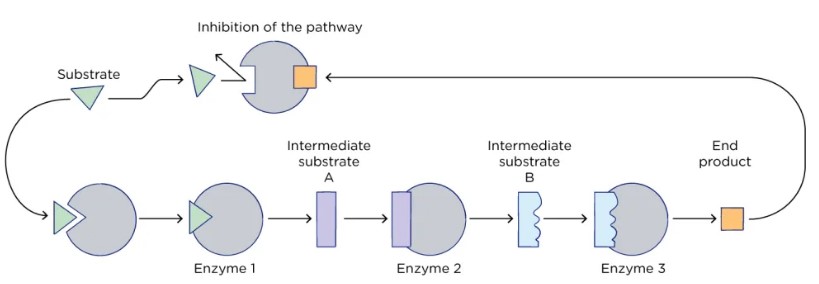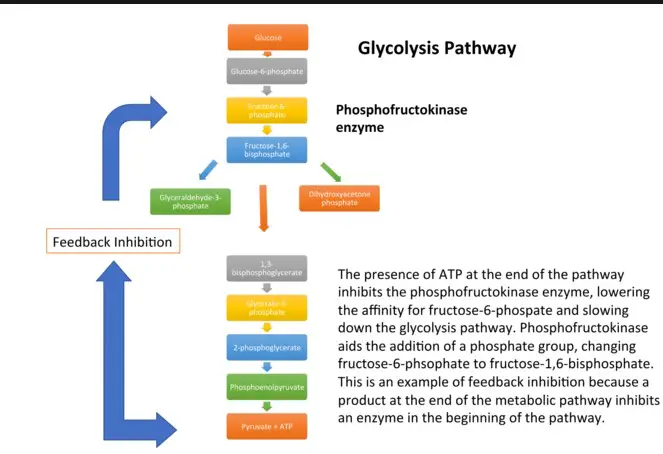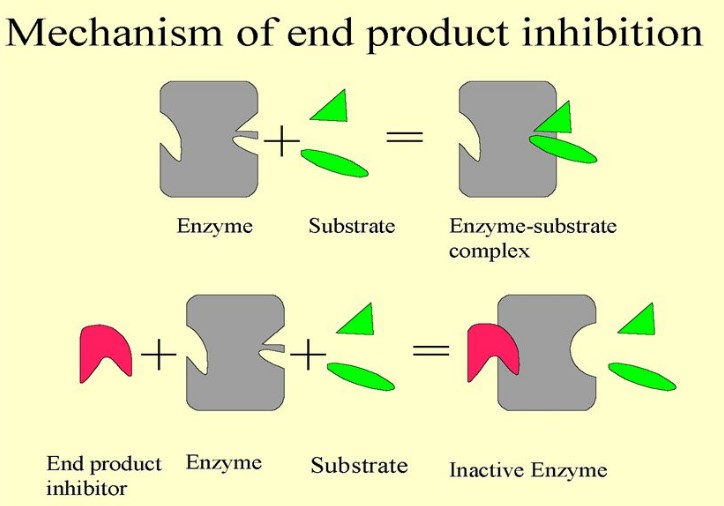In the complex world of cellular processes, regulation is key. Both feedback inhibition and feedback repression play pivotal roles in this regulation, ensuring cells operate efficiently and adaptively. These mechanisms are not only fundamental to understanding how biological systems maintain balance but also crucial in the development of medical and biotechnological advancements.
Feedback inhibition and feedback repression represent two distinct strategies employed by cells to regulate metabolic pathways and gene expression, respectively. Feedback inhibition involves the end product of a pathway inhibiting the activity of an enzyme involved early in the pathway, thus preventing the overaccumulation of the end product. In contrast, feedback repression controls the production of enzymes by inhibiting gene expression, thereby reducing the enzyme levels and slowing down the pathway.
Focusing on these mechanisms reveals the elegance of cellular control systems. Feedback inhibition provides a rapid response to changes in metabolite concentrations, allowing cells to quickly adapt to their immediate needs. On the other hand, feedback repression offers a longer-term adjustment by altering enzyme production rates, ensuring resources are allocated efficiently for survival and growth. Understanding these processes is essential for grasping how organisms respond to internal and external stimuli, maintaining homeostasis, and evolving over time.

Feedback Basics
What is Feedback?
Feedback, in the realm of biology, refers to a process where the output of a system is looped back as input to control the function of the system. This mechanism allows biological systems to self-regulate and maintain homeostasis, ensuring stability despite external changes. Feedback mechanisms are fundamental to numerous biological processes, including gene expression, metabolic pathways, and enzyme activity.
Role in Biological Systems
Feedback plays a critical role in biological systems by enabling organisms to respond adaptively to environmental fluctuations and internal changes. This process is essential for:
- Maintaining metabolic balance
- Regulating cell growth and division
- Ensuring energy efficiency
- Adapting to nutrient availability
By leveraging feedback mechanisms, cells can adjust their activities in real-time, promoting survival in diverse and changing environments.
Feedback Inhibition
Definition
Feedback inhibition is a regulatory mechanism where the end product of a metabolic pathway inhibits the action of an enzyme involved earlier in the pathway. This form of regulation prevents the unnecessary accumulation of the end product, thus conserving energy and resources.
Mechanism
The mechanism of feedback inhibition involves the binding of the end product to an allosteric site on the enzyme. This binding induces a conformational change in the enzyme, reducing its activity. The steps can be simplified as follows:
- Synthesis of end product.
- End product binds to the enzyme.
- Enzyme changes shape.
- Activity of the enzyme decreases.
Enzyme Activity Control
Feedback inhibition directly controls enzyme activity, making it a quick and reversible response to changes in metabolite levels. This immediate control allows cells to rapidly adapt their metabolic processes to meet their current needs.
Example in Metabolic Pathways
A classic example of feedback inhibition is the regulation of the biosynthesis of isoleucine from threonine in bacteria. Isoleucine, the end product, inhibits the activity of the first enzyme in the pathway, ensuring that its own synthesis is downregulated when it is abundantly present.
Key Characteristics
Feedback inhibition is characterized by its:
- Rapid response to changes in metabolite concentrations
- Reversibility, allowing quick adaptation to new conditions
- Specificity, targeting particular enzymes in metabolic pathways
Feedback Repression
Definition
Feedback repression is a more long-term regulatory mechanism that controls the expression of genes encoding for enzymes. Instead of directly influencing enzyme activity, it adjusts the level of enzyme production based on the needs of the cell.
Mechanism
The mechanism of feedback repression involves the end product of a pathway influencing the transcription of genes. This can lead to a decrease in the production of enzymes when the end product is in excess. The steps include:
- Accumulation of the end product.
- Interaction with a repressor protein or DNA sequence.
- Inhibition of gene transcription.
- Decreased enzyme production.
Gene Expression Control
Feedback repression controls the amount of enzyme available for a metabolic pathway by regulating gene expression. This mechanism offers a long-term adjustment to the cell’s enzymatic composition, affecting how efficiently metabolic pathways can operate.
Example in Protein Synthesis
An example of feedback repression is seen in the synthesis of tryptophan in bacteria. When tryptophan levels are high, it acts as a corepressor with a repressor protein to inhibit the transcription of the genes involved in its own production.
Key Characteristics
Feedback repression is notable for its:
- Long-term regulation of metabolic activity
- Indirect control over enzyme activity through gene expression
- Precision in adjusting enzyme levels according to cellular requirements
Comparing Mechanisms
Direct vs. Indirect Control
- Feedback inhibition provides direct control by immediately affecting enzyme activity.
- Feedback repression exerts indirect control by altering gene expression and, subsequently, enzyme production.
Speed of Response
- Feedback inhibition offers a quick response, adjusting enzyme activity in real-time.
- Feedback repression results in a slower response, given the time required to change gene expression patterns.
Reversibility
- Feedback inhibition is reversible, allowing cells to quickly adapt to decreased metabolite levels.
- Feedback repression is less reversible, as changing enzyme levels requires new gene transcription and translation.
Impact on Metabolism
- Feedback inhibition allows for rapid adjustments in metabolic pathways, ensuring efficient use of resources.
- Feedback repression provides long-term regulation, optimizing the cell’s enzymatic machinery over time for changing environmental conditions.

Biological Significance
The intricate dance of feedback mechanisms within living organisms is a testament to the sophistication of life. Feedback inhibition and repression are not just molecular footnotes but central players in the drama of life, influencing everything from the microscopic to the macroscopic. Their significance spans adaptive responses, homeostasis, and even the evolutionary trajectory of species.
Adaptive Responses
Life is about adaptation. Cells and organisms face a constantly changing environment, where resources can be abundant one moment and scarce the next. Feedback mechanisms enable these living entities to respond dynamically to such changes. For instance, when a nutrient becomes less available, feedback inhibition can quickly downregulate its consumption pathways, conserving it for essential processes. Similarly, feedback repression adjusts the expression levels of key enzymes, ensuring that the cell’s metabolic machinery is optimized for the current conditions. This adaptability is crucial for survival in unpredictable environments.
Homeostasis Maintenance
At the heart of biological systems lies the principle of homeostasis — the maintenance of stable internal conditions. Feedback inhibition and repression are key to this stability, constantly adjusting biological processes to maintain equilibrium. Whether it’s controlling the concentration of glucose in the bloodstream or the synthesis of nucleotides for DNA replication, these feedback processes ensure that cells, and by extension, organisms, can operate in a balanced state, despite external fluctuations.
Evolutionary Perspective
From an evolutionary standpoint, feedback mechanisms represent a refined control system that has been selected for over millions of years. Organisms with effective feedback controls are better equipped to manage resource utilization, respond to environmental stressors, and reproduce successfully. These mechanisms also allow for the evolution of complex metabolic pathways and regulatory networks, contributing to the diversity of life we see today. Understanding feedback in this evolutionary context highlights its significance beyond immediate metabolic adjustments, revealing its role in shaping life on Earth.
Application in Biotechnology
The principles of feedback inhibition and repression have profound implications in biotechnology, particularly in the fields of genetic engineering and drug development. By manipulating these natural processes, scientists can develop new technologies and therapies that address some of humanity’s most pressing challenges.
Genetic Engineering
In genetic engineering, feedback mechanisms are harnessed to optimize the production of valuable proteins, such as enzymes, vaccines, and hormones. By modifying the feedback control points, scientists can increase the yield of these proteins in microbial or cell cultures. For example, by disabling feedback inhibition pathways, a genetically modified organism (GMO) can produce higher levels of a desired metabolite, making the production process more efficient and cost-effective.
Drug Development
Feedback mechanisms are also central to the development of new drugs, especially those targeting metabolic diseases and cancer. Drugs that mimic the action of feedback inhibitors can be used to downregulate overactive pathways, offering a strategy to combat diseases characterized by metabolic imbalances. Similarly, understanding feedback repression mechanisms can lead to the development of gene therapy approaches, where the goal is to correct genetic defects that disrupt normal feedback control.
Challenges and Future Directions
While the potential of harnessing feedback mechanisms in biotechnology is vast, there are significant challenges and research gaps that need to be addressed. Additionally, these mechanisms offer promising therapeutic targets for a range of diseases.
Research Gaps
One of the primary challenges in fully exploiting feedback mechanisms is our incomplete understanding of these complex regulatory networks. Despite significant advances, the interplay between different feedback loops and their integration into larger metabolic and genetic regulatory networks is not fully understood. Moreover, the impact of these feedback mechanisms on the phenotypic plasticity and adaptability of organisms remains a fertile ground for research. Bridging these gaps requires interdisciplinary approaches, combining molecular biology, bioinformatics, and systems biology.
Potential Therapeutic Targets
Feedback mechanisms, by virtue of their central role in maintaining cellular homeostasis, present unique therapeutic targets. For instance, targeting specific feedback inhibition pathways in cancer cells can disrupt their metabolic flexibility, a hallmark of cancer, leading to their demise. Similarly, correcting feedback repression anomalies through gene editing technologies like CRISPR-Cas9 holds promise for treating genetic disorders. The challenge lies in designing interventions that are precise and have minimal off-target effects, ensuring that the delicate balance of cellular processes is maintained.
FAQs
What is Feedback Inhibition?
Feedback inhibition is a regulatory mechanism where the final product of a metabolic pathway inhibits an enzyme involved earlier in the pathway. This prevents the overproduction of the end product, ensuring metabolic balance and efficient resource use within the cell.
How Does Feedback Repression Work?
Feedback repression regulates gene expression by inhibiting the transcription of genes encoding for enzymes. When the end product of a pathway is abundant, it can bind to a repressor molecule or DNA, preventing the synthesis of more enzyme and thus adjusting the pathway’s activity.
Why is Feedback Regulation Important?
Feedback regulation is crucial for maintaining cellular homeostasis. It allows cells to adapt quickly to changes in their environment, manage resource allocation, and ensure that metabolic pathways operate efficiently without producing excess or insufficient amounts of critical substances.
What Are the Key Differences Between Feedback Inhibition and Repression?
The key differences lie in their mechanisms and effects. Feedback inhibition acts quickly by directly affecting enzyme activity, making it reversible and immediate. Feedback repression, however, involves changes in gene expression, leading to longer-term adjustments in enzyme levels and pathway activity.
Conclusion
The dance between feedback inhibition and feedback repression within cells illustrates the sophistication of biological regulation. These mechanisms ensure that cells function optimally, responding to the ever-changing internal and external environments with precision. The study of these regulatory strategies not only deepens our understanding of life at a molecular level but also opens doors to innovative treatments and technologies by harnessing the principles of cellular control.
In essence, the difference between feedback inhibition and feedback repression reflects the nuanced ways in which life maintains balance. As researchers continue to unravel the complexities of these processes, the potential for novel therapeutic strategies and biotechnological applications grows, highlighting the importance of these mechanisms in both science and medicine.

